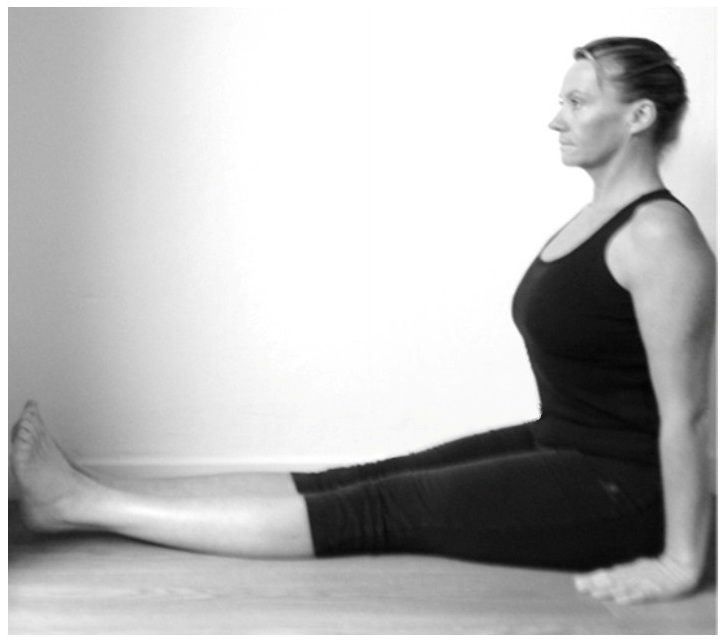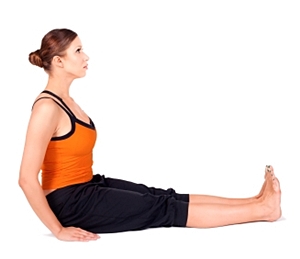Following up on the last post about dandasana we can look at the two pictures from the post to see very clearly what happens to the upper body when the pelvis is tucked under. Tucking the pelvis lengthens the lower back in the wrong way and often rounds the lower spine backwards instead of allowing it to curve in. This is the way many of us sit at our desks even if we are capable of sitting with better posture.
I want you to look at the connection between the lower spine and the head. In the picture on the left because the pelvis is in the correct position allowing for a natural curve of the lumbar spine, the head sits easily on top of the spine. In the picture on the right the tuck of the pelvis which pulls the spine out of its natural alignment, thrusts the head forward because the curve of the lumbar spine disappears.
The curve of the lumbar spine is a trait that makes us distinctly human. The lumbar curve was created by the forward and downward pull of the psoas muscles as we came up to the stand. The downward pull of the psoas major is counteracted by the upward pull of the erector spinea and other spinal muscles that extend the spine up on top of the pelvis. We depend on that action in sitting as well as in standing. The head will sit successfully on top of the spine only if the curve of the lower back is in its natural alignment; without the lumbar curve (and the psoas), the spine can’t support the weight of the head and it surges forward lost in space.
Forward head posture is the most common misalignment I see. It all stems from tucking the pelvis. Everyone tucks their pelvis.
Try to stop tucking your pelvis.
Good luck.
***


